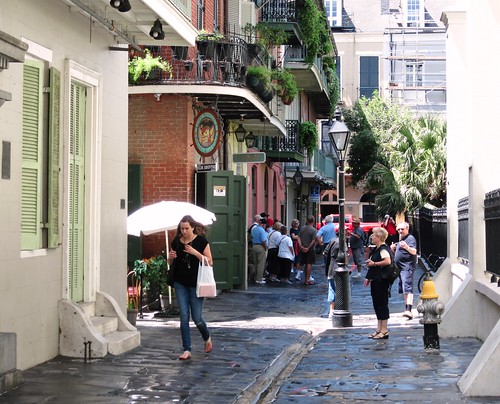Contemplating Earth Day at 40: a journey for the environment, from NIMBY to YIMBY

Posted April 15, 2010 at 1:34PM
As I write this, I am attending the annual conference of the American Planning Association, where I was invited to speak. We are in New Orleans, one of the world’s most welcoming and culturally rich cities, the horrors of Katrina and limitations of longtime poverty notwithstanding. It is also a city rich with historic, walkable neighborhoods. This is a well-suited venue for experiencing, contemplating and sharing the ingredients of community and how to make a better built environment.
What’s a YIMBY?
APA’s membership is composed largely of city and town planners, working for municipalities across the country. They are, at least in their 21st-century incarnation, ‘accidental environmentalists’ whose traditional intentions may not be explicitly environmental but whose current (and in many cases longstanding) causes of thoughtful placemaking, great communities, and efficient transportation almost by definition reduce the weight and scope of our human footprint upon the earth. They get it, intuitively.
In fact, I would argue that they get it better than many environmentalists did for a long time, given our movement’s traditional distrust of cities, development, and commerce. One would have been hard pressed to find a self-identified environmentalist at the time of the first Earth Day, in 1970, who supported land development of any kind, orderly or not. But this is no longer the case, and I and many of my colleagues in the environmental community are living proof.
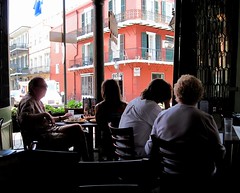 We now think of ourselves as passionate advocates of development done well, no longer NIMBYs (Not In My Back Yard) but YIMBYs for smart, green urbanism. We know that land development – residential, commercial, civic – is going to happen with our country’s population growth and cannot (and should not) be wished away. We absolutely must say yes, especially in our back yards, to making it as beneficial for the environment and as nurturing to the human spirit as possible. More about that in a bit.
We now think of ourselves as passionate advocates of development done well, no longer NIMBYs (Not In My Back Yard) but YIMBYs for smart, green urbanism. We know that land development – residential, commercial, civic – is going to happen with our country’s population growth and cannot (and should not) be wished away. We absolutely must say yes, especially in our back yards, to making it as beneficial for the environment and as nurturing to the human spirit as possible. More about that in a bit.
Whither Earth Day
I have to admit that I have never been all that enamored of Earth Day. Part of it is that I remember the original one in 1970, when people I knew were being sent off to die in a tragic war for very dubious reasons, and my own status was in jeopardy. I remember seeing a TV newscast of that Earth Day showing school kids sitting around singing earth songs, and I thought it was trivial by comparison to stopping the war, diverting the county's attention from something that seemed much more urgent.
Some folks felt different, and as a result we now have NRDC, the Environmental Defense Fund, 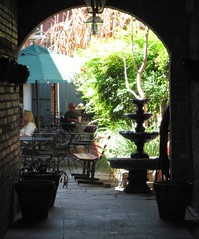 the National Environmental Policy Act, the federal EPA, and a whole slew of federal environmental legislation from that energized period in the early and mid-1970s. And I now have a career.
the National Environmental Policy Act, the federal EPA, and a whole slew of federal environmental legislation from that energized period in the early and mid-1970s. And I now have a career.
Today, Earth Day still can feel a little gimmicky to me, to be honest. But, given that this year brings a decadal anniversary of this wondrous beast we call the modern environmental movement, it’s a good opportunity to reflect on where we’ve been, and where we are. I’ve evolved a lot during these decades, and so has our cause. (By the way, we should not forget that there was also a ‘pre-modern’ environmental movement: Teddy Roosevelt, John Muir, Aldo Leopold and Rachel Carson certainly didn’t wait for Earth Day to get started. Neither did proto-urbanist Jane Jacobs, for that matter.)
Becoming a ‘recovering litigator’
I began my professional career as a litigation lawyer (not in the environmental field, which barely existed when I graduated from law school) and it took me forever to shake the label. I started as a consumer advocate, litigating deceptive advertising cases at the Federal Trade Commission with the most remarkably bright, energetic and creative (two in my small office eventually became screenwriters) bunch of people I have had the honor of working with. Having made a reputation as a budding young litigator, I was soon hired by a private law firm. I assisted on the firm’s top cases and, when the client didn’t want to pay the fees the top people in my firm commanded, was lead counsel on others.
I became exposed to environmental law and liked it. When an opening came up in the policy section of the US Department of Justice’s environmental division, I lobbied hard to get it and did. That job put me in contact with NRDC and eventually another opportunity, which I had to lobby even harder to get. That was 28 years ago, and I’ve never left.
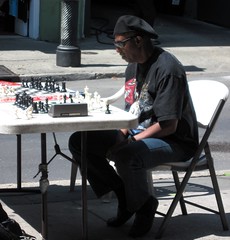 There was still a problem, though: the law firm, Justice and NRDC liked me as a litigator more than I liked to litigate. NRDC in particular wanted to, and did, deploy me before administrative agencies and the federal courts to stop environmental damage, particularly in our national forests. When we needed someone to manage a large and important case where NRDC was a defendant, I was deployed for that, too. (Trust me: it’s more fun being the plaintiff.) But the world of arbitrary deadlines, constant jockeying for position with abstract arguments about procedure, and being adversarial for a living isn’t for everyone.
There was still a problem, though: the law firm, Justice and NRDC liked me as a litigator more than I liked to litigate. NRDC in particular wanted to, and did, deploy me before administrative agencies and the federal courts to stop environmental damage, particularly in our national forests. When we needed someone to manage a large and important case where NRDC was a defendant, I was deployed for that, too. (Trust me: it’s more fun being the plaintiff.) But the world of arbitrary deadlines, constant jockeying for position with abstract arguments about procedure, and being adversarial for a living isn’t for everyone.
It took me at least 15 years at NRDC to get out of the litigation box and work directly on solutions rather than just stopping bad things. How could I get from NIMBY to YIMBY, I wondered, and would there be a place for YIMBY thought and advocacy in the environmental movement?
Working to create good things, not just stop bad ones
Well, yes, because the environmental movement was changing. My colleague Ralph Cavanagh was blazing a new trail, figuring out a way for electric utilities to make more money from managing demand for electricity than by building or expanding power plants. My colleague (and future MacArthur laureate) David Goldstein was devising a way for mortgage lenders to make money by investing in “location-efficient” neighborhoods that required less driving and thus freed up borrowers’ incomes to make homebuying more accessible.
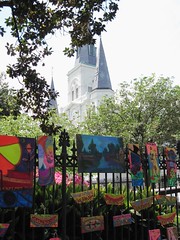 NRDC’s energy program, perhaps more than any other group of advocates in the mainstream environmental movement, became champions of a new wave of solutions that recognized that all business wasn’t evil, that with the right programs we could become partners instead of adversaries. And with better results for the planet, frequently, than we were getting out of litigation and adversarial lobbying. When our energy team was looking in the mid-1990s for someone to address transportation efficiency, I could not have been more ready.
NRDC’s energy program, perhaps more than any other group of advocates in the mainstream environmental movement, became champions of a new wave of solutions that recognized that all business wasn’t evil, that with the right programs we could become partners instead of adversaries. And with better results for the planet, frequently, than we were getting out of litigation and adversarial lobbying. When our energy team was looking in the mid-1990s for someone to address transportation efficiency, I could not have been more ready.
(I still had to dodge a couple of situations where some members of the old guard thought it would be a swell idea for me – since I was a litigator, after all – to spend my time fighting bad highway projects, but by then I had enough clout at NRDC to say no. It did not harm those challenges, which were well prosecuted by talented lawyers in other organizations.)
It took about five minutes for me to discover (with the help of APA, among others) that transportation efficiency was really about land use. And so were a lot of other environmental challenges, from conservation of the landscape to healthy waterways to clean air to wetlands preservation and more. But what was still missing was the ‘aha’ solution for land use: sprawl was certainly the villain, but what could be the land use equivalent of Ralph’s industry-friendly utilities reform?
Becoming a YIMBY at last
I didn’t really become a YIMBY until I read of uber-architect/planner/thinker Andres Duany’s pioneering work in creating a nonsprawling community in Seaside, Florida, and of equally uber-architect/planner/thinker Peter Calthorpe’s work in articulating (and naming) ‘transit-oriented development,’ walkable communities built around neighborhood conveniences and public transportation stops. 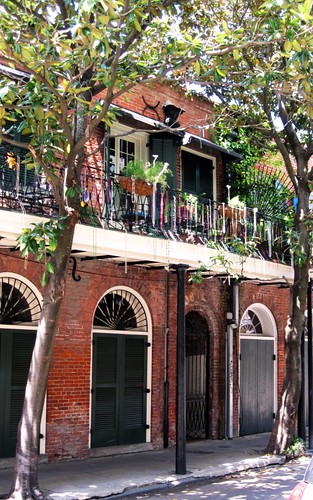 These templates addressed land use and transportation at once, and made for convivial neighborhoods, too. That was something positive to advocate. It was good for developers, good for residents, and great for the environment, compared to sprawl. (In a lot of ways, they were actually working on emulating the historic neighborhoods of New Orleans and other older cities.)
These templates addressed land use and transportation at once, and made for convivial neighborhoods, too. That was something positive to advocate. It was good for developers, good for residents, and great for the environment, compared to sprawl. (In a lot of ways, they were actually working on emulating the historic neighborhoods of New Orleans and other older cities.)
As I was soon to learn, I wasn’t alone. There was a growing group of us, arriving at the same conclusions at the same time. Well, frankly, some were already ahead of us, including Duany and Calthorpe, and a whole bunch of enlightened people in Oregon. But now the enviros and advocacy organizations were getting on board – elements of the solutions were being developed not just within architectural and planning circles but also at places like the Environmental Defense Fund, Center for Neighborhood Technology, EPA, Sierra Club, American Farmland Trust, Conservation Fund, Surface Transportation Policy Project, the National Trust for Historic Preservation, the Enterprise Foundation and more.
Parris Glendening gave our movement a name, making ‘smart growth’ his signature issue as governor of Maryland. Eliot Allen of Criterion Planners began to use sophisticated technology and brainpower to measure the environmental impacts of neighborhoods, almost universally finding that those that were well located within their regions, designed to be walkable and transit-accessible, and efficient in their use of land produced superior results to sprawling subdivisions and commercial strips. The progressive architectural movement that Duany, Calthorpe and their peers called 'the new urbanism' eventually became even more powerful when coupled with environmentalists' smart growth theory that insisted that even the best-designed development would not produce net benefits unless it went into the right places, and stayed out of the wrong ones.
We found industry partners, too, in the Urban Land Institute and Congress for the New Urbanism, and professional organization partners such as APA. The smart growth movement, writ large, was born. We created organizations like Smart Growth America, the Smart Growth Network, and the Growth Management Leadership Alliance to support the cause and, eventually, LEED for Neighborhood Development to rate and certify it. Congressman Earl Blumenauer and Senators Jim Jeffords and Carl Levin became our early legislative champions.
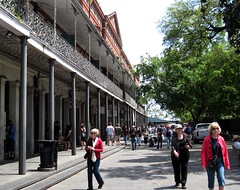 How is being a YIMBY different?
How is being a YIMBY different?
Our movement became, and remains, much more about making friends and building alliances than slaying enemies. There are still folks within NRDC and other organizations who fight the bad stuff and don’t back down in fierce legislative battles, and you should be very glad of it. (We need them even to fight preservation battles in New Orleans, where important neighborhoods are at risk as I write.) And there are still some folks in the environmental movement who don’t quite know what to make of us YIMBYs, even though one of the better-kept secrets is that we’re winning: central cities are growing again after years of decline, driving rates are declining, sprawl developments are losing money, all this even before the recession, and nearly every community in America wants to jump on the smart growth bandwagon, one way or another. Zoning ordinances are being reformed left, right, and center to support walkable and transit-accessible neighborhoods. California now has a smart growth planning law to reduce carbon emissions, and so many jurisdictions are adopting complete-streets laws to make sure that walkers, cyclists, and transit users are accommodated fairly alongside cars that I can’t keep up. There is no question that market forces are trending our way.
Collaborating for solutions works. And it’s not just we smart growth advocates, of course. NRDC’s energy program is still leading the way in its realm. Our water program is working on solutions, too. Our urban program is working on green jobs. We even have a Center for Market Innovation, whose sole purpose is to work with industry on win-win approaches to environmental challenges. Our sister organizations in the environmental community also have solution-oriented agendas. The environmental movement has grown up.
Back to New Orleans
When I spoke to the planning audience at the New Orleans meeting,  I opened by saying, “You are my heroes. You already know what to do to make better, more sustainable communities. I see my job as building public and political support to enable you to do it.” It’s not completely that simple, of course: we still have much to learn together and from each other. We have a lot more implementation to accomplish and great neighborhoods and communities to build. But I knew I was among friends, by and large.
I opened by saying, “You are my heroes. You already know what to do to make better, more sustainable communities. I see my job as building public and political support to enable you to do it.” It’s not completely that simple, of course: we still have much to learn together and from each other. We have a lot more implementation to accomplish and great neighborhoods and communities to build. But I knew I was among friends, by and large.
I then demonstrated my YIMBY credentials by arguing for more, not less, development in some places. It can be counter-intuitive to some, but we actually reduce per capita environmental impacts by concentrating them. We use less land, emit less carbon, reduce the spread of pavement that way. But I also argued that we must be thoughtful about it. We must make the places where we build better and greener. We should only be YIMBYs when the development earns it.
The day after the talk, I spent several hours walking around the Vieux Carré, the French Quarter. It is the essence of a lively, walkable neighborhood with tons of character. Yes, it can be very touristy, what with conventioneers like myself ambling around; but there are always plenty of locals about, too. It can be boisterous and loud in places at night, but it has quiet, restful spots, too. You can even find a parking spot if you need one, which you won’t, unless you’re coming from or going to a place less convenient. 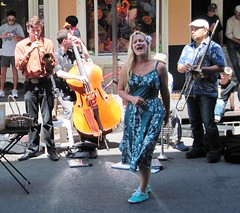 And you can also sample some of the world’s best music and food, which you should, because post-Katrina New Orleans is still recovering and needs your business to strengthen its municipal coffers. The Quarter has proved itself quite literally sustainable, having survived three centuries more or less intact.
And you can also sample some of the world’s best music and food, which you should, because post-Katrina New Orleans is still recovering and needs your business to strengthen its municipal coffers. The Quarter has proved itself quite literally sustainable, having survived three centuries more or less intact.
You’re actually limiting your environmental footprint while you’re having a good time here, because you’re using your feet, not your car. And, if you want a change of scenery, you can hop aboard one of the country’s oldest streetcar lines, part of which rides on a green rail bed. You have to try really hard to have a bad time in old New Orleans.
You see, it’s easy being green when you’re in a great, walkable neighborhood. We need more of them. And we need more YIMBYs to help make them happen.
